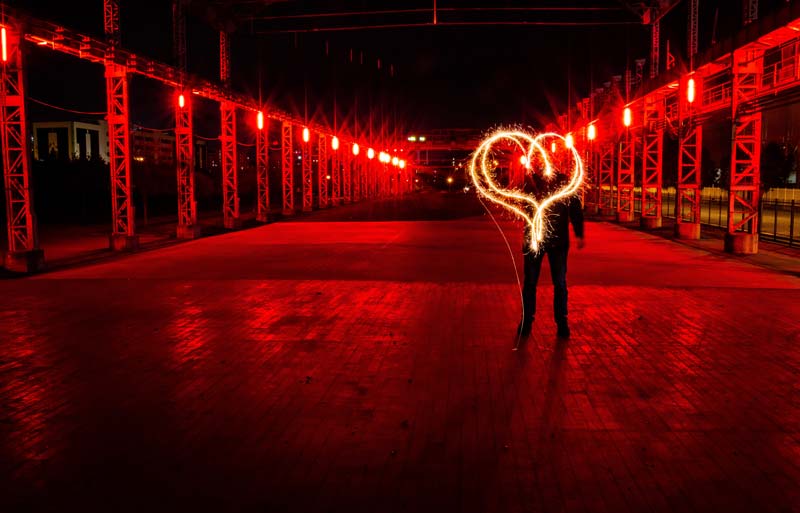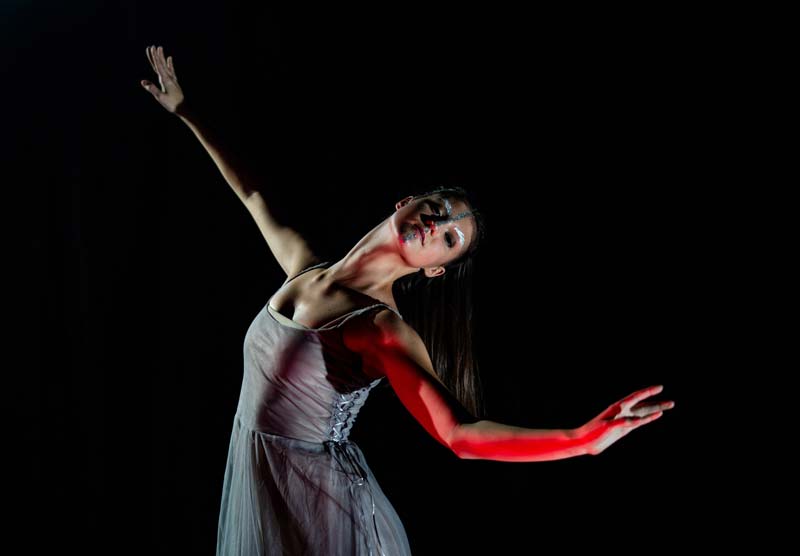What is the story of Cirque du Soleil O?
Any individual who has seen the Cirque du Soleil appears to battle with the remarks when they attempt to depict the experience a short time later. It’s stunning, heavenly, out of this world, incredible are usual words for the experience people get there.
Entitled O for the sound and state of the letter, for the outcry, and for the French word for water (eau), the presentation at the Bellagio happens over, around, and in water. The stage is a huge, oval water tank with stages that can be raised to the water’s surface or brought down to give space to swimming and plunging. Franco Dragone composed and coordinates the show. He expects it to be a tribute to theatre itself, “for it is in the theatre where mankind attempts to get itself.”
The costuming is reminiscent, frightful, lovely, and testing. The demonstrations stun trapeze craftsmen without any nets, acrobats, jumpers jumping off of Russian swings from inverse sides of the stage at the same time, and performing floods of wanders aimlessly noticeable all around before parting the outside of the water. Be that as it may, the costuming appears to slip into that space in our brains that stun gives.
The movement is widely inclusive. Indeed, there are artists, and the majority of the gymnastics, plunging, and different accomplishments are moulded as moves, yet the stages rising and falling, moving into each other to make visual and textural designs. The blinds move. The light moves. What’s more, the water itself moves.
The whole show is gone through two robotizations reassures in the lighting stall that controls practically every component of the creation separated from the entertainers themselves. The moving stage and set, the lighting prompts, the turning mechanical merry go round that supports the elevated entertainers high over the stage and the piano that sinks beneath the water toward the finish of the show – every one of these components is seen on a progression of screens in the lighting stall.
Joined with cameras that give the team various perspectives on the behind the stage territories, the entire arrangement is somewhat similar to a cutting-edge Bond refuge, instead of a theatre. It’s positively far from the lighting corner at your nearby novice rep.
Be that as it may, we’d expect nothing less from one of the greatest visiting generation organizations on the planet.
How it all started?
At the beginning of the 1980s, a troupe of entertainers established by Gilles Ste-Croix took their ability to the roads of Baie-Saint-Paul, an enchanting town on the shores of the St. Laurent River close to Quebec City. Referred to the general population as Les Échassiers de Baie-Saint-Paul (The Stiltwalkers of Baie-Saint-Paul), this gathering would frame the center of what might develop into Cirque du Soleil. This group had a varied show, featuring performers, artists, fire breathers, and musicians who satisfied nearby fans with their demonstration.
Little did these early fans and entertainers realize that these embryonic beginnings would prompt something mystical, energizing, and progressive on a worldwide scale.At the beginning of the 1980s, a troupe of entertainers established by Gilles Ste-Croix took their ability to the lanes of Baie-Saint-Paul, an enchanting town on the shores of the St. Laurent River close to Quebec City. Referred to people in general as Les Échassiers de Baie-Saint-Paul (The Stiltwalkers of Baie-Saint-Paul), this gathering would shape the center of what might develop into Cirque du Soleil.
This group had a diverse show, featuring performers, artists, fire breathers, and musicians who satisfied nearby fans with their demonstration. Little did these early fans and entertainers realize that these embryonic beginnings would prompt something enchanted, energizing, and progressive on a worldwide scale.
Cirque du Soleil caused a ripple effect in the worldwide scene without precedent for 1987 upon their first voyage through the US. We Reinvent the Circus shocked Los Angeles Festival fans and media the same with it’s one of a kind way to deal with the circus.
Point by point set plan, a phase flanked via seating on all sides, and dynamic crowd connection with spectators being locked in with both physically and innovatively spearheaded the refined format that is found at the center of each new Cirque du Soleil show from that point. After sell-out shows in San Diego and Santa Monica, We Reinvent the Circus led Cirque du Soleil’s first abroad voyage through Europe in 1990.
1993’s Mystere turned into the main perpetual Cirque du Soleil show.
What kind of music is there in this circus?
The music is maybe the core of the entire thing. In a circus, musical numbers are composed to give the entertainers signs, to give them a chance to time their demonstrations with the goal that they step on and off of the high wire at the ideal time, figure out how to get each other’s wrists as they swing through the air, etc.
Cirque du Soleil’s music supports its entertainers along these lines, yet it likewise supplies a supporting state of mind and furthers the story. Composed by Benoit Jutras and performed live for each presentation on instruments as changed as sham, cello, electric percussion, erhu, zhonghu, and saxophone, O’s music runs the full range of “world music.”
We hear in it now and again African and Asian impacts, yet additionally going through everything are the customary hints of the circus: the cheerful accordion and the lilting, thoughtful calliope.
Filmography of “O”
Like all Cirque du Soleil exhibitions, O isn’t just a progression of circus acts. However an arrangement of connected scenes, planned to pass on a story, a general thought. In O, the story is about the water of life itself, how it bears us up, encompasses us as we live on dry ground, overpowers us, continues us, lastly suffocates us.
The majority of the demonstrations, while bewildering accomplishments of human ability all by themselves, serve to draw the story along. The fire-eater exhibits the dynamism among fire and water; the two jokesters, following the moderate-paced emulate convention instead of directing a steady arrangement of pratfalls, demonstrate humankind’s stupid endeavours to manage the marvellous powers of water in tempest and flood.
Vanishing Act
Prior to “O” opened to general society in October 1998, Cirque du Soleil was at that point surely understood for its epic creations and one of a kind arranging. In any case, the development of the Bellagio club in Las Vegas in the late ’90s introduced another chance: a uniquely fabricated theatre and a clear record.
So, what do you do when you work in Vegas? You start with a pool, obviously. What’s more, in case you will do a water show, why not do it with a 1.5-million-gallon tank?
Indeed, even with this water – “O” takes its name from the French word for water, “eau” – Cirque still required a phase. In any case, except if Cirque needed to fabricate a privateer ship (and Vegas previously had a lot of hot, privateers themed shows of fluctuating quality), it required an option that is superior to wood.
The “O” is made of Mondo flooring (the caring you find at track and field competition meets) and is really isolated into four sections, each set on four huge scissor lifts. The lifts can rapidly and easily drop from creeps above water to the base of the pool 17 feet beneath, profound enough for a high jumper to jump in from 60 feet noticeable all around.
In the entrails of the theatre, everything appears to be so easy as this huge stage descends into the pool, water going through a huge number of gaps bored over the surface.
Sitting in the group of spectators, the impact is entrancing: Clowns stroll on strong ground one moment, and the following, a trapeze artist is apparently strolling on water or a high jumper is vanishing into the blue.
While a jump from 60 feet is outrageous enough, it’s difficult to envision how Cirque could have made further difficulties with the arranging of the show.
However, behind the stage, security is wherever you look. You can even hear it, underneath the auditorium on the dry side of the tank – a blaring sound, similar to sonar, that flag the stage is moving and cautions stray jumpers to escape the pool. With 18 years of experience, obviously, Cirque leaves nothing to risk.
Underneath the Surface
Viewing the “O” group in real life is a performance center buff’s fantasy. Nerds tackled 110 feet over the stage rig high wires and set up stepping stools for high jumpers. Swimmers flutter behind the stage to make their next prompt. Wellbeing jumpers hold up in the pool behind the drapes, looking like stagehands yet in scuba gear.
The cast and team numbers are immense. There are 75 entertainers and another 122 experts who work off camera. Each individual in the group (aside from the 27-man group in the closet) is a confirmed scuba jumper.
Fourteen of the jumpers remain in the water during the whole show, carrying out ordinary behind the stage responsibilities like moving props and keeping entertainers alive.
In the event that you’ve seen “O,” you’ll recollect the group of synchronized swimmers who open the show, playing out a multifaceted and consummately planned routine utilizing only their feet to dunk all through the water.
Absolute control
Going in the background, you get a feeling of exactly what number of moving parts there are in “O.” With 75 entertainers dangling from ethereal circles, swinging metal casings, and monster merry go round steeds, Cirque has its hands full with arranging, prompts, and specialized necessities.
Include the way that entertainers have gone back and forth during the 18-year run and that each new entertainer needs to open into the show without avoiding a beat; it bodes well for each component of this confused exhibition to be robotized.
Where are the shows?
Las Vegas, NV Bellagio
Where can I buy tickets?
To buy the tickets, you can go to the official website and browse the tickets here.
Can you take photos at Cirque du Soleil?
No, you are not allowed to take photos or make videos of the show. Flash photos are also big, no, as they can be a danger for the performers.
Hello everyone, I am the main writer for SIND Canada. I’ve been writing articles for more than 10 years and I like sharing my knowledge. I’m currently writing for many websites and newspaper. All my ideas come from my very active lifestyle. I always keep myself very informed to give you the best information. You can contact me on our contact page or by email at: info@sind.ca.




